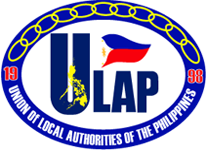
In carrying out its role as a bridge of LGUs, ULAP has adopted a local governance approach for the various programs and policy advocacies it carries. This Local Governance Approach serves as a guide for analysis and resource-generation of ULAP to convene alliances and put together more holistic program and policy "packages" for LGUs. ULAP believes that in order for initiatives to be effective, they should be able to cover as many components as possible.
The Local Governance Approach has three components: Leadership, Supply and Demand.
LEADERSHIP
The Leadership component reflects the need for effective and efficient policy environments for Local governance, and well-capacitated local leaders to carry out mandates and innovate on complex development challenges. For this component, ULAP is guided by these board questions:
What policies in the national and local levels must be in place so that local leaders will be empowered to perform their work more effectively and efficiently?
What capacity-building inputs are needed so that local leaders can be strategic and effective in their work?
SUPPLY
The Supply component encapsulates the need for access and availability of a wide range of resources for local governments to drove the needed processes to be implemented. For this component, ULAP is guided by these board questions:
What local resources can be tapped and generated to enable policy and program implementation? How can these resources be effectively and efficiently spent for desired outcomes?
How can local governments engage national government agencies, private sector, and civil society partners to leverage on each other’s’ financial resources, technical capacities, human resources, and strategic networks?
DEMAND
Meanwhile, the Demand component reflects the need for community-level support and engagement for sustained and intensive collaborations with the people. For this component, ULAP is guided by these board questions:
How can initiatives foster demand-driven governance? What modes of direct engagement with local governments can be opened to local groups from various sectors?
How can involvement of local partners help local government sustain excellent initiatives?
How can excellent initiatives withstand political transitions and unpredictable resource-generation environments




